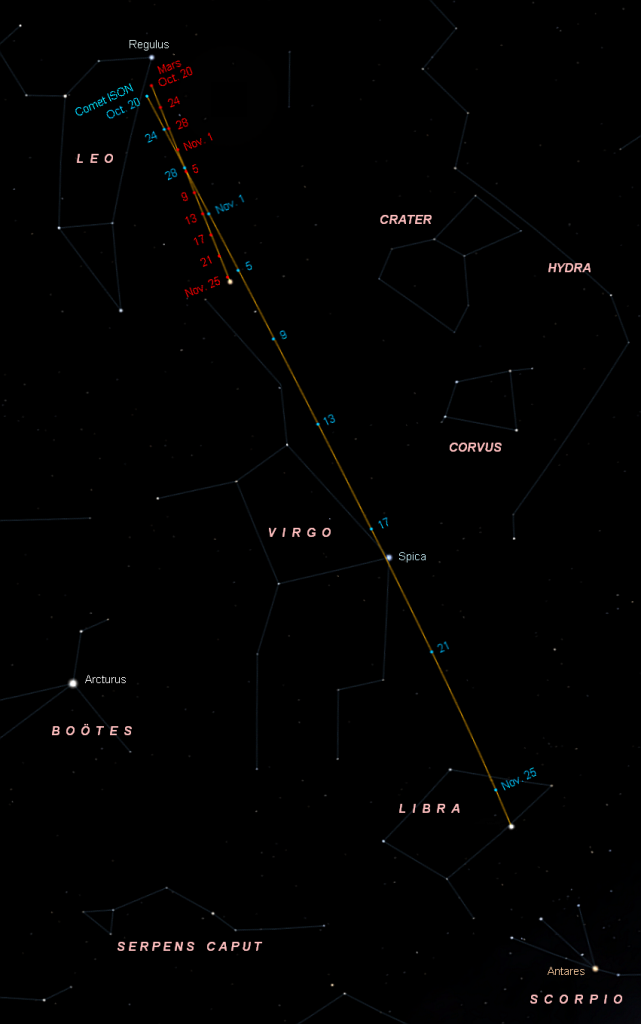Weekly astronomy blog for the week ending October 26, 2013
A comet discovered about a year ago is getting closer to the sun. That means it’s getting brighter. Early on, some astronomers thought Comet ISON might become so bright it would outshine nearly all the stars and planets. Whether it does remains to be seen. There may be another surprise from ISON, too.
Two amateur Russian astronomers discovered ISON using an International Scientific Optical Network telescope in September 2012. Because other comets discovered with the same telescope network are also called ISON, astronomers avoid confusion by using its scientific designation “C/2012 S1”. The discoverers are Vitali Nevski and Artyom Novichonok, so in keeping with an older naming tradition, it can also be called Comet Nevski-Novichonok.
ISON passed within 6.5 million miles of Mars on October 1. It’s too bad the comet hadn’t become a naked eye object already, because it and the red planet would have made a nice sight as they approached and passed Regulus on October 16th, the bright star in the heart of Leo.
The comet and the planet are separating. The comet will pass very close, less than 0.3° degree from the bright star Spica on November 18. However, it will also be getting close to the sun, so the two will be hard to pick out of the dawn glare.
ISON will get to within about a million miles of the sun’s surface on the 28th. Some astronomers are debating whether the interaction of gravitational forces and the comet’s inertia could break the comet apart. We shall see.
Some astronomers thought ISON may be related to Comet Kirch, seen in 1680 and 1681, because the two have similar orbits. However, they don’t have identical orbits. Kirch will pass this way again in about 9,000 years. ISON will leave the solar system and never return. But let us hope for another similarity. Kirch, also called the Great Comet of 1680, was bright enough to see in the daytime!
Here are some links to more information about Comet ISON and a finders guide. ¡SkyCaramba!
http://www.universetoday.com/104818/
http://www.space.com/19973-comet-ison.html
http://www.astro.umd.edu/~msk/blog/articles/comet-ison-jan13
